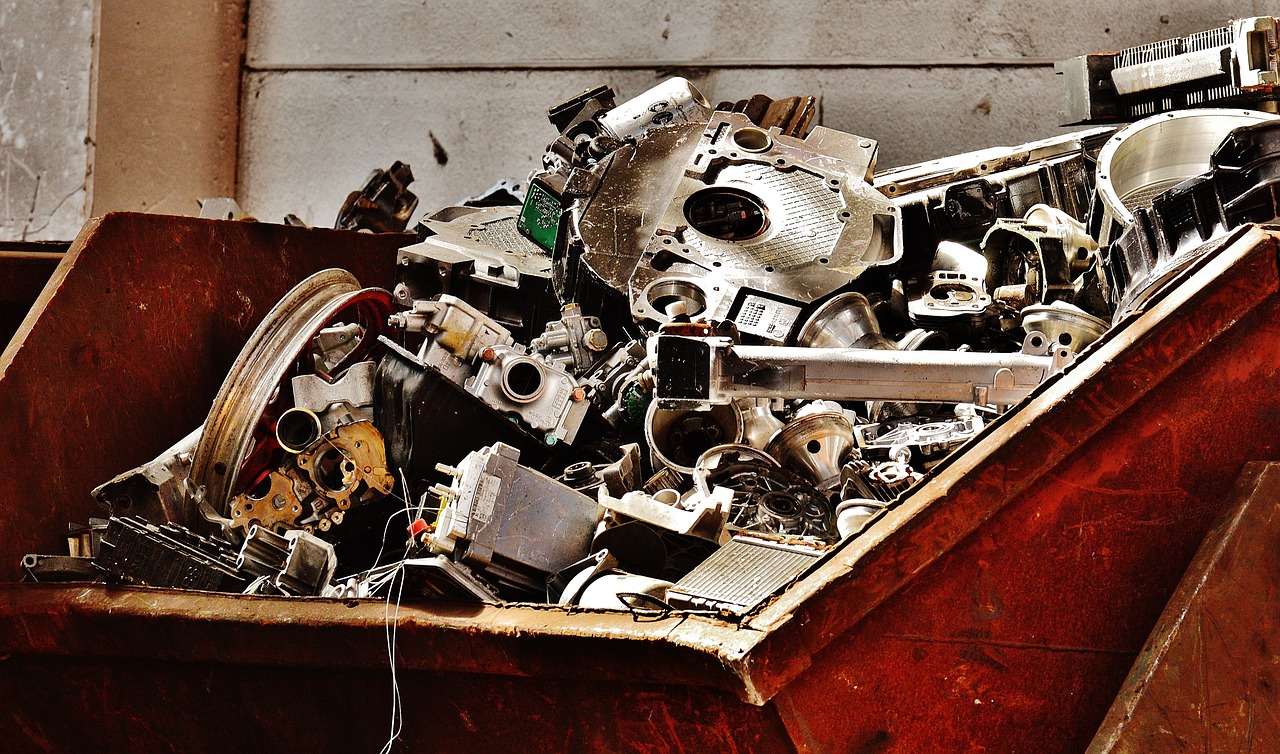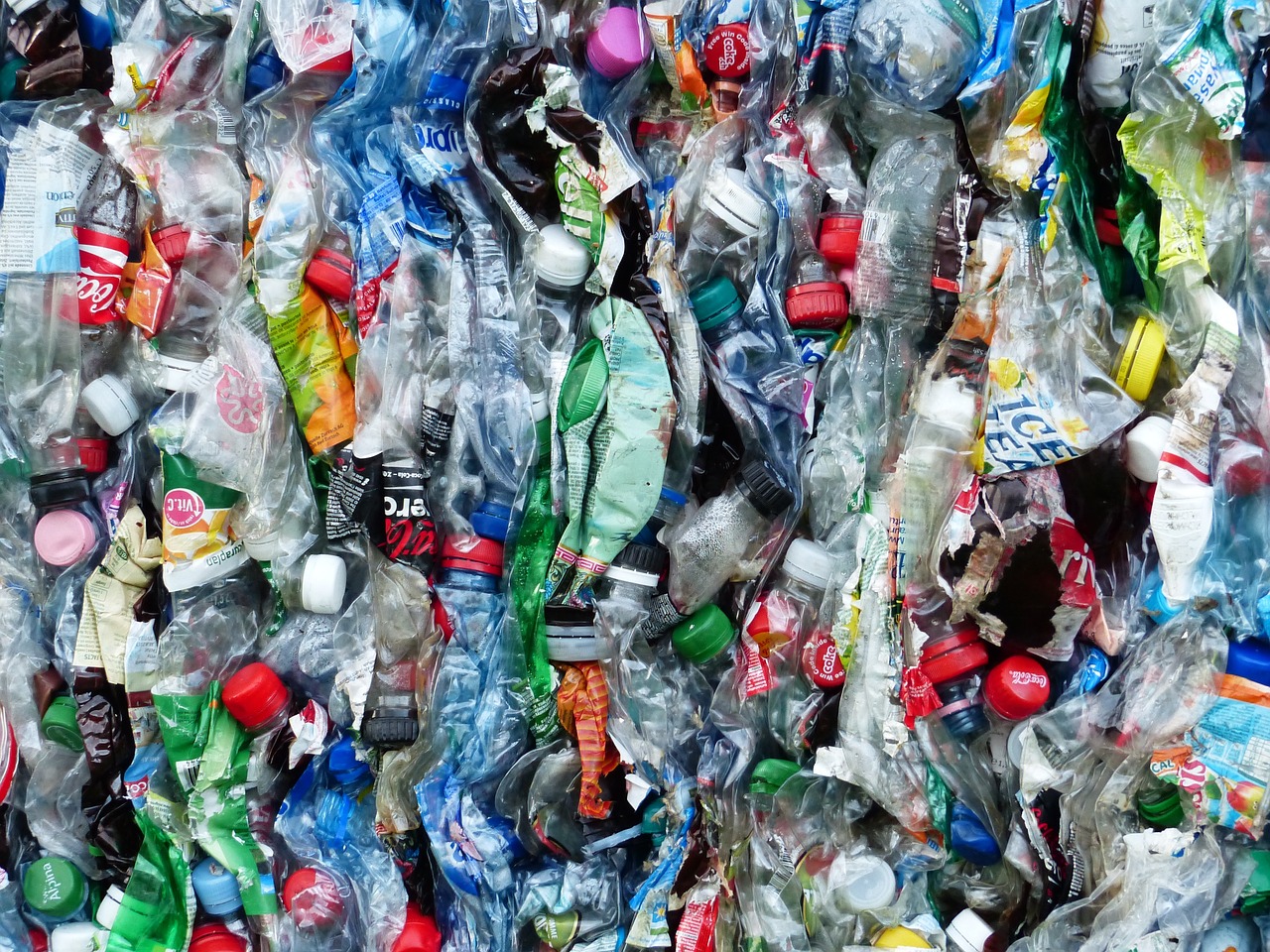The Future of Recycling - What Does It Look Like?
As we step into a new era of environmental consciousness, the future of recycling is not just a topic of discussion; it's a necessity. With our planet facing unprecedented challenges from waste accumulation and resource depletion, innovative recycling practices are more critical than ever. The landscape of recycling is evolving, driven by technological advancements, supportive government policies, and a growing awareness among individuals about the importance of sustainable practices. But what exactly does this future look like? Let’s dive into the exciting developments reshaping recycling today and what we can expect in the years to come.
Picture this: a world where every piece of waste is efficiently transformed back into usable materials, significantly reducing the need for virgin resources. Sounds dreamy, right? Well, it's becoming a reality thanks to cutting-edge technologies that are revolutionizing how we process materials. From AI-driven sorting systems that can identify and categorize recyclables with astonishing accuracy to advanced chemical recycling techniques that break down plastics at a molecular level, the innovations are endless. These technologies not only increase efficiency but also minimize contamination in recycling streams, ensuring that more materials are successfully recycled rather than ending up in landfills.
Moreover, the role of government cannot be understated in this transformation. Governments worldwide are implementing policies that encourage recycling and sustainability, striving to create a circular economy where waste is minimized, and resources are reused. Initiatives such as mandatory recycling laws and subsidies for recycling programs are becoming commonplace. As citizens, we can expect to see more robust regulations aimed at enhancing recycling rates and promoting environmentally friendly practices. It’s a collective effort that requires participation from all sectors of society, and the government is at the forefront of this movement.
Advancements in recycling technologies are not just changing the game; they are rewriting the rules entirely. Imagine a sorting facility where robots equipped with machine learning algorithms can distinguish between various types of plastics, metals, and papers at lightning speed. This is not science fiction; it's happening right now! These innovations are crucial in reducing contamination, which has historically been a significant barrier to effective recycling. The cleaner the recycling stream, the more materials can be processed and reused, leading to a more sustainable future.
In addition to technological advancements, the backbone of a successful recycling system lies in robust government policies. These policies serve as a framework that encourages both businesses and individuals to adopt sustainable practices. For instance, governments are increasingly adopting Extended Producer Responsibility (EPR) policies, which hold manufacturers accountable for the entire lifecycle of their products, including their disposal. This shift not only incentivizes companies to design products that are easier to recycle but also fosters a culture of responsibility towards waste management.
Extended Producer Responsibility (EPR) is a game-changer in the recycling landscape. By shifting the burden of waste management back onto producers, EPR encourages manufacturers to think critically about the materials they use and how their products will be disposed of. This approach promotes the design of recyclable products and fosters innovation in materials that can be easily repurposed. For example, companies are now exploring biodegradable materials and packaging alternatives that reduce environmental impact. The benefits of EPR are manifold, but it’s essential to understand its implementation challenges.
Looking at successful EPR case studies can provide valuable insights into effective practices and outcomes. Countries like Sweden and Germany have implemented robust EPR systems, leading to significantly increased recycling rates. In Sweden, for instance, the recycling rate has reached over 99%, showcasing the effectiveness of these policies. Such examples serve as a roadmap for other nations aiming to enhance their recycling efforts.
However, the road to effective EPR adoption is not without its hurdles. Common challenges include resistance from manufacturers, lack of public awareness, and the need for comprehensive infrastructure to support these initiatives. Overcoming these obstacles requires collaboration between governments, businesses, and communities to create a unified approach towards responsible recycling.
Incentives can significantly boost recycling rates. Community programs that offer rewards for recycling participation, such as discounts or points redeemable for goods, have shown promising results. These initiatives not only motivate individuals to recycle more but also foster a sense of community around sustainability.
Education is the cornerstone of effective recycling. Without proper knowledge, even the best systems can falter. Strategies for raising public awareness about recycling are essential. This includes community workshops, school programs, and social media campaigns aimed at educating people on the importance of waste separation and recycling practices.
Community engagement programs are pivotal in fostering a culture of recycling. Initiatives that involve local populations in hands-on activities, such as clean-up drives and recycling fairs, not only educate but also empower individuals to take action. These programs create a sense of ownership and responsibility towards the environment.
In our digital age, technology plays a crucial role in enhancing recycling education. Apps and online resources are making it easier for individuals to learn about proper recycling methods and track their efforts. These tools provide valuable information at our fingertips, making it more accessible for everyone to participate in recycling initiatives.
- What is the best way to recycle plastics? - Always check local guidelines, clean the items, and separate them by type.
- How can I get involved in local recycling programs? - Check with your local government or community centers for upcoming events and programs.
- What are the benefits of Extended Producer Responsibility? - EPR encourages manufacturers to create more sustainable products and reduces the burden on local waste management systems.

Innovative Recycling Technologies
Advancements in recycling technologies are revolutionizing how we process materials, making recycling not just a necessity but a science. Imagine a world where your plastic bottle doesn’t just get thrown away but is transformed into something new and useful. That’s the promise of innovative technologies that are emerging in the recycling sector today!
One of the most exciting developments is the rise of automated sorting systems. These systems use advanced sensors and artificial intelligence to identify and separate different types of materials with incredible precision. For instance, optical sorting technologies can recognize the chemical composition of plastics, ensuring that only the right materials make it to the recycling stream. This drastically reduces contamination rates, which is one of the biggest challenges in recycling. Less contamination means more materials can be recycled, which is a win-win for the environment!
Additionally, new chemical recycling methods are gaining traction. Unlike traditional mechanical recycling, which can only process certain types of plastics, chemical recycling breaks down plastics into their basic monomers. This allows for the recycling of a wider range of materials, including those that are typically non-recyclable. Think of it as a magic potion that turns old, unwanted plastics back into their original form, ready to be reused in new products.
Moreover, the integration of blockchain technology in recycling is paving the way for greater transparency and accountability in the recycling process. By tracking materials from the point of disposal to the recycling facility, blockchain can provide insights into the journey of recyclables, ensuring that they are handled responsibly. This not only builds trust among consumers but also encourages companies to take recycling seriously.
As we look to the future, it’s clear that collaboration between technology and sustainability is essential. For example, companies are now developing apps and platforms that help consumers understand how to recycle properly. These tools often include features that allow users to scan barcodes on products to see if they are recyclable and how to dispose of them correctly. Imagine having a personal recycling assistant in your pocket!
In summary, the landscape of recycling is evolving rapidly, driven by innovative technologies that enhance efficiency and sustainability. With automated sorting, chemical recycling, blockchain transparency, and user-friendly digital tools, we are moving towards a future where recycling is not just an option but a standard practice. As these technologies continue to develop, we can look forward to a world where waste is minimized, and resources are conserved, paving the way for a healthier planet.

Government Policies and Regulations
Government initiatives play a crucial role in promoting recycling and shaping a sustainable future. As we look towards a greener planet, the importance of effective policies cannot be overstated. These regulations not only help manage waste but also encourage communities and businesses to adopt more environmentally friendly practices. In recent years, many governments have recognized the need for comprehensive recycling strategies that address the growing challenges of waste management.
One of the most significant shifts in policy has been the introduction of mandatory recycling laws. These laws require households and businesses to separate recyclables from general waste, ensuring that valuable materials are not lost to landfills. For instance, some countries have implemented strict regulations that impose fines on those who fail to comply with recycling guidelines. This approach not only increases recycling rates but also raises public awareness about the importance of waste separation.
Another important aspect of recycling policy is the concept of pay-as-you-throw (PAYT) programs. These initiatives charge residents based on the amount of waste they generate, effectively incentivizing them to reduce waste and increase recycling. By making waste disposal more costly, these programs encourage individuals to think twice before throwing away items that could be recycled. A study conducted in various cities showed that implementing PAYT programs can lead to a 30% increase in recycling rates within the first year.
Moreover, government policies are increasingly focusing on circular economy principles. The idea is to create a system where materials are reused, repaired, and recycled, minimizing waste and conserving resources. This shift requires collaboration across sectors, including manufacturers, retailers, and consumers. For example, some countries have established recycling targets that businesses must meet, fostering a culture of accountability and sustainability. The table below illustrates some of the recycling targets set by various countries:
| Country | Recycling Target (%) | Year Implemented |
|---|---|---|
| Germany | 65 | 2012 |
| Sweden | 50 | 2018 |
| South Korea | 75 | 2020 |
| Japan | 60 | 2015 |
In addition to these measures, governments are also investing in public education campaigns to raise awareness about recycling. These campaigns aim to inform citizens about what can be recycled and how to do it properly. By providing clear information and resources, governments can significantly improve recycling rates and foster a culture of sustainability.
However, the path to effective recycling policies is not without its challenges. Issues such as funding, public compliance, and infrastructure can hinder the success of recycling initiatives. For example, in many regions, the lack of adequate recycling facilities can lead to contamination of recyclable materials, making them unsuitable for processing. To combat this, governments must ensure that proper infrastructure is in place, along with ongoing support for community recycling programs.
In conclusion, government policies and regulations are vital in shaping the future of recycling. By implementing comprehensive strategies that encourage participation and promote sustainable practices, we can create a cleaner, greener world. As we continue to innovate and adapt, it's essential for governments to stay ahead of the curve and lead the charge towards a more sustainable future.
- What are the main goals of recycling policies? Recycling policies aim to increase recycling rates, reduce waste, and promote sustainable practices among individuals and businesses.
- How do governments enforce recycling regulations? Governments enforce recycling regulations through fines, public education, and providing resources for proper waste management.
- What is the circular economy? The circular economy is a model that emphasizes the reuse, repair, and recycling of materials to minimize waste and conserve resources.

Extended Producer Responsibility
Extended Producer Responsibility (EPR) is a game-changing policy approach that shifts the responsibility of waste management from consumers to producers. Imagine a world where the manufacturers of products are held accountable not just for creating them, but also for ensuring they are disposed of properly. This means that when you buy a new gadget or a piece of furniture, the company behind it is also thinking about what happens when you're done using it. This innovative approach encourages manufacturers to design products that are not only functional but also recyclable, minimizing waste and promoting sustainability.
One of the key aspects of EPR is that it incentivizes companies to rethink their product designs. By integrating recyclability into the design process, businesses can create items that are easier to disassemble and recycle, reducing the amount of waste that ends up in landfills. For instance, consider how the automotive industry has begun using materials that are more easily recyclable, or how electronics manufacturers are focusing on modular designs that allow for easier repairs and upgrades. This shift not only benefits the environment but also appeals to consumers who are increasingly eco-conscious.
However, implementing EPR is not without its challenges. Many companies may resist such changes due to the potential increase in costs associated with redesigning products or managing post-consumer waste. Additionally, there can be a lack of infrastructure to support recycling efforts, making it difficult for companies to fulfill their responsibilities effectively. To tackle these challenges, collaboration between governments, businesses, and consumers is crucial. By establishing clear guidelines and providing support, governments can help create an environment where EPR can thrive.
To illustrate the impact of EPR, let’s look at some successful case studies from around the world:
| Country | EPR Program | Impact |
|---|---|---|
| Germany | Packaging Act | Increased recycling rates to over 60% for packaging waste. |
| Sweden | Battery Directive | Achieved a collection rate of 45% for portable batteries. |
| Canada | Electronic Waste Program | Reduced electronic waste in landfills by 30% within five years. |
These examples showcase how EPR can lead to significant improvements in waste management practices. By holding producers accountable, we can create a circular economy where products are designed for longevity and recyclability, ultimately benefiting the planet.
In conclusion, Extended Producer Responsibility represents a pivotal shift in how we think about waste management. It encourages manufacturers to take ownership of their products throughout their lifecycle, fostering innovation and sustainability. As we move forward, it's essential for stakeholders to collaborate and overcome the challenges associated with EPR, ensuring that we all play our part in creating a greener future.

Case Studies of EPR Implementation
Extended Producer Responsibility (EPR) is gaining traction worldwide, and its implementation has led to remarkable changes in waste management practices. Let's take a closer look at some compelling case studies that highlight the effectiveness of EPR policies in various countries. These examples not only showcase successful outcomes but also provide valuable lessons for others looking to adopt similar strategies.
One standout example is Germany, a pioneer in EPR with its Packaging Act. This legislation mandates that producers and distributors of packaging materials are responsible for the entire lifecycle of their products. As a result, Germany has achieved an impressive recycling rate of over 60%. The system encourages companies to design packaging that is easier to recycle, fostering innovation in sustainable materials. The success of this initiative can be attributed to stringent regulations and a well-structured collection and recycling system, making it a model for other nations.
Another notable case is Sweden, which has implemented EPR policies for electronics through its Producer Responsibility for Electrical and Electronic Equipment (WEEE) directive. This initiative has led to a significant increase in the recycling of electronic waste, with rates soaring to over 50%. Swedish producers are required to finance the collection and recycling of their products, incentivizing them to create more sustainable designs. The combination of public awareness campaigns and effective collection systems has made Sweden a leader in electronic waste management.
In Canada, the province of British Columbia has adopted an EPR program for various products, including paint and batteries. The BC Recycling Regulation mandates that producers take responsibility for the end-of-life management of their products. This has resulted in a substantial reduction in hazardous waste and an increase in recycling rates across the province. The program is designed to be financially sustainable, with producers funding the collection and recycling processes, thus alleviating the financial burden on taxpayers.
Moreover, France has taken a bold step with its EPR policies by introducing the Eco-Emballages program, which focuses on household packaging. This initiative requires manufacturers to contribute to a fund that supports recycling efforts. France has seen a notable increase in recycling rates, with over 70% of packaging materials being recycled. The program not only promotes responsible production but also engages consumers through awareness campaigns, reinforcing the importance of recycling.
While these case studies illustrate the success of EPR implementations, it’s important to acknowledge some common challenges faced during their rollout. Issues such as compliance, monitoring, and the need for public education can hinder effectiveness. However, these challenges can be addressed through robust regulatory frameworks, continuous stakeholder engagement, and innovative public outreach strategies.
In conclusion, the case studies from Germany, Sweden, Canada, and France provide compelling evidence that EPR can lead to significant improvements in recycling rates and overall waste management practices. By holding producers accountable for their products, these countries are paving the way for a more sustainable future. As more nations consider adopting EPR policies, the lessons learned from these examples will be invaluable in shaping effective and responsible recycling programs.
- What is Extended Producer Responsibility (EPR)?
EPR is an environmental policy approach that holds producers accountable for the entire lifecycle of their products, including waste management and recycling. - How does EPR benefit the environment?
By encouraging manufacturers to design recyclable products and take responsibility for waste, EPR helps reduce landfill waste and promotes sustainable practices. - Can EPR be implemented in all countries?
While EPR can be adapted to various contexts, its success depends on local regulations, public awareness, and the cooperation of producers and consumers. - What are some challenges of implementing EPR?
Common challenges include compliance monitoring, public education, and the need for effective collection systems.

Challenges of EPR Adoption
While Extended Producer Responsibility (EPR) offers a promising framework for enhancing recycling efforts, its adoption is not without challenges. One major hurdle is the lack of uniformity in regulations across different regions. Each country, and often each state or municipality, may have its own set of rules governing EPR, leading to confusion among manufacturers. This inconsistency can create a patchwork of compliance requirements that complicate the implementation of effective recycling programs.
Another significant challenge is the financial burden that EPR can impose on manufacturers, especially small and medium-sized enterprises (SMEs). For many businesses, the costs associated with developing recyclable products or managing take-back programs can be overwhelming. These financial pressures may deter companies from fully committing to EPR initiatives, resulting in a slower transition to sustainable practices.
Moreover, there is often a lack of awareness among producers about their responsibilities under EPR frameworks. Many manufacturers may not fully understand the implications of these regulations or how to effectively integrate them into their business models. This knowledge gap can lead to inadequate compliance and missed opportunities for innovation in product design.
To further complicate matters, the infrastructure for recycling varies significantly between regions. In areas where recycling facilities are scarce or underfunded, even the best EPR policies may struggle to achieve their intended outcomes. Without the necessary infrastructure to support recycling efforts, materials may end up in landfills instead of being processed efficiently.
Finally, public engagement and participation play a crucial role in the success of EPR initiatives. If consumers are not aware of or do not value recycling, the entire system can falter. It’s essential for producers to not only take responsibility for their products but also to educate the public on the importance of recycling and proper waste disposal.
In summary, while EPR presents a compelling solution for enhancing recycling efforts, overcoming these challenges requires a concerted effort from manufacturers, governments, and the public alike. Collaborative approaches that involve all stakeholders will be essential in navigating the complexities of EPR adoption and ensuring its success in promoting sustainable waste management practices.
- What is Extended Producer Responsibility (EPR)? EPR is a policy approach that holds producers accountable for the entire lifecycle of their products, including waste management and recycling.
- Why is EPR important for recycling? EPR encourages manufacturers to design products that are easier to recycle, ultimately reducing waste and promoting sustainability.
- What are the main challenges of implementing EPR? The main challenges include regulatory inconsistencies, financial burdens on manufacturers, lack of awareness, inadequate recycling infrastructure, and the need for public engagement.
- How can consumers help with EPR initiatives? Consumers can support EPR by choosing products from companies that prioritize sustainability and by actively participating in recycling programs.

Incentives for Recycling Participation
When it comes to boosting recycling rates, incentives can play a game-changing role. Imagine living in a community where every time you recycle, you earn points that can be redeemed for discounts at local stores or even cash rewards. Sounds enticing, right? Such initiatives not only motivate individuals to participate in recycling but also foster a sense of community responsibility towards the environment. Programs that offer tangible rewards can significantly increase participation rates, making recycling a more appealing and rewarding activity.
One of the most effective ways to encourage recycling is through financial incentives. Many municipalities have started implementing deposit return schemes for bottles and cans. In these programs, consumers pay a small deposit when purchasing a beverage, which is refunded when they return the container for recycling. This strategy not only reduces litter but also promotes a circular economy where materials are reused rather than discarded. Studies have shown that areas with such programs see a marked increase in recycling rates, often exceeding 90% for beverage containers.
In addition to financial incentives, community recognition programs can also motivate individuals to recycle. For example, some cities hold annual contests where neighborhoods compete for the title of "Most Improved Recycling Community." Winners receive public recognition and a grant for local environmental projects. This kind of friendly competition can spark enthusiasm and encourage residents to take recycling seriously.
Moreover, educational incentives can enhance participation. When people understand the impact of their actions, they are more likely to engage. Workshops, school programs, and community events that teach the benefits of recycling can empower individuals to make informed decisions. For instance, providing information on how recycling conserves energy and reduces greenhouse gas emissions can resonate deeply with eco-conscious citizens.
It's also crucial to consider how technology can aid in incentivizing recycling. Apps that track recycling habits and reward users with points or badges can gamify the experience. Users can share their achievements on social media, creating a ripple effect that encourages others to join in. Imagine a scenario where your recycling efforts are not just a personal achievement but a community-wide challenge, fostering a culture of sustainability.
To sum it up, implementing a mix of financial, educational, and community-based incentives can significantly enhance recycling participation. By making recycling rewarding and engaging, we can move towards a more sustainable future where everyone plays a part in protecting our planet. After all, when people feel appreciated and informed, they are much more likely to take action. So, let’s keep the momentum going and make recycling not just a duty but a delightful habit!
- What are some effective financial incentives for recycling? Financial incentives can include deposit return schemes, cash rewards for recycling, or discounts at local businesses.
- How can communities promote recycling participation? Communities can promote recycling through recognition programs, contests, and educational workshops that inform residents about the benefits of recycling.
- What role does technology play in recycling? Technology can enhance recycling participation through apps that track recycling habits and provide rewards, making the process more engaging and fun.
- Why is education important for recycling? Education helps individuals understand the environmental impact of their actions, empowering them to make informed decisions about recycling.

Recycling Education and Awareness
In today's world, where environmental issues are at the forefront of global discussions, recycling education has become more crucial than ever. It's not just about tossing your plastic bottle into the right bin; it's about understanding the entire lifecycle of materials and how our choices impact the planet. The truth is, many people are unaware of the proper ways to recycle, which leads to contamination and inefficiencies. This lack of knowledge can be likened to trying to cook a gourmet meal without knowing how to use the kitchen tools at your disposal. Just as a chef must understand their ingredients, we must understand our waste.
One of the most effective strategies for enhancing recycling awareness is through community engagement programs. These initiatives not only inform residents about the importance of recycling but also actively involve them in sustainable practices. For instance, local governments can organize workshops that teach residents how to separate their waste correctly, turning what could be a mundane task into an engaging community event. Imagine a neighborhood block party where everyone brings their recyclables, learns together, and even competes for the title of "Best Recycler." Such events foster a sense of community while instilling essential recycling habits.
Moreover, digital tools are revolutionizing how we learn about recycling. With the rise of smartphones, apps dedicated to recycling information have become widely accessible. These apps can provide users with instant answers to questions like, "Can I recycle this?" or "What bin does this item go in?" They can also track individual recycling efforts, creating a gamified experience that encourages users to improve their recycling habits. In essence, these digital platforms serve as personal recycling assistants, guiding us through the maze of materials and regulations.
To illustrate the impact of education on recycling rates, let's take a look at some statistics:
| Year | Recycling Rate (%) | Education Initiative |
|---|---|---|
| 2015 | 34 | Community Workshops |
| 2018 | 41 | School Programs |
| 2021 | 49 | Digital Campaigns |
This table highlights how targeted education initiatives can lead to significant increases in recycling rates over time. It's evident that as communities invest in educational programs, the public's understanding and participation in recycling improve. But it's not just about numbers; it's about creating a culture where recycling becomes second nature.
As we look to the future, it's essential to continue fostering recycling education and awareness. Governments, non-profits, and even businesses can play a role in this effort. By collaborating on campaigns that emphasize the importance of recycling and providing the necessary resources, we can create a more informed public that takes pride in their contributions to sustainability.
- Why is recycling education important? Recycling education helps individuals understand the impact of their waste and promotes better recycling practices, leading to less contamination and higher recycling rates.
- How can I get involved in recycling education programs? Check with your local government or community centers for workshops, events, and volunteer opportunities focused on recycling education.
- Are there any apps that can help me learn about recycling? Yes! There are numerous apps available that provide information on what can be recycled and how to properly sort waste.

Community Engagement Programs
Community engagement programs are the heartbeat of effective recycling initiatives. They serve as a bridge between the complexities of waste management and everyday individuals, fostering a culture of sustainability. Imagine a neighborhood where everyone is not just aware of recycling, but actively participating in it! This vision becomes a reality through targeted engagement programs that bring people together, educate them, and empower them to make a difference.
One significant aspect of these programs is their ability to cater to the unique needs of different communities. For instance, urban areas may require different strategies compared to rural settings. By understanding the local demographics, recycling programs can tailor their approaches, ensuring maximum participation. This could include workshops, informational booths at community events, or even school-based initiatives that teach children about the importance of recycling from a young age.
Moreover, successful community engagement programs often incorporate fun and interactive elements. Think about organizing neighborhood clean-up days or recycling competitions. These activities not only enhance community spirit but also serve as practical lessons in waste management. When people see the tangible results of their efforts, such as cleaner streets or reduced landfill waste, they become more motivated to continue their recycling habits.
To illustrate the impact of these programs, consider the following table that highlights some successful community engagement initiatives:
| Program Name | Location | Key Features | Results |
|---|---|---|---|
| Green Neighborhoods | San Francisco, CA | Monthly clean-up events, educational workshops | 25% increase in recycling rates over 2 years |
| Recycling Champions | Toronto, ON | Community leader training, incentive programs | 30% more households participating in recycling |
| Eco Schools | London, UK | School curriculum integration, student-led initiatives | Improved recycling knowledge among students |
Additionally, it's crucial to leverage digital platforms to amplify the reach and effectiveness of community engagement programs. Social media campaigns, local apps, and websites can serve as powerful tools for disseminating information, sharing success stories, and encouraging community members to participate. For example, a dedicated app could allow residents to track their recycling habits, learn about local recycling events, and even earn rewards for their efforts. This gamification of recycling not only makes it more engaging but also instills a sense of accountability.
Ultimately, the success of community engagement programs hinges on collaboration. Local governments, non-profits, and businesses can work together to create a unified approach to recycling education and participation. By pooling resources and knowledge, these partnerships can develop comprehensive strategies that resonate with the community, ensuring that recycling becomes not just a task, but a shared value. The more we engage our communities, the more we can transform the future of recycling into a sustainable reality.
- What are community engagement programs?
Community engagement programs are initiatives designed to involve local residents in sustainable practices, particularly recycling, by educating them and encouraging participation. - How can I get involved in local recycling programs?
Check with your local government or community organizations for upcoming events, workshops, or volunteer opportunities related to recycling. - Why are these programs important?
They help raise awareness, improve recycling rates, and foster a culture of sustainability within the community.

Digital Tools for Recycling Education
In today's fast-paced world, where information is just a click away, digital tools are revolutionizing how we educate ourselves about recycling. Imagine having a personal recycling coach right in your pocket! With the rise of smartphones and apps, learning about proper recycling practices has never been easier or more engaging. These tools not only provide valuable information but also gamify the process, making it fun for users of all ages. But what exactly are these tools, and how can they make a difference?
Firstly, there are numerous mobile applications designed specifically for recycling education. These apps offer users the ability to scan barcodes on products to determine their recyclability. For instance, apps like Recycle Coach and iRecycle provide instant feedback on how to dispose of items correctly. Users can even set reminders for recycling days, ensuring they never miss an opportunity to contribute to a cleaner environment. This level of accessibility empowers individuals to take responsibility for their waste.
Moreover, many cities are now integrating digital platforms into their recycling programs. Local governments are creating websites and social media pages that serve as hubs for recycling information. These platforms often feature interactive maps showing recycling drop-off locations, schedules for curbside pickup, and tips for reducing contamination in recycling bins. By utilizing social media, cities can also engage with residents directly, answering questions and sharing success stories that inspire others to participate.
Another exciting development is the use of virtual reality (VR) and augmented reality (AR) in recycling education. Imagine putting on a VR headset and stepping into a virtual world where you can see the journey of a plastic bottle from your home to the recycling facility. This immersive experience not only captivates users but also instills a deeper understanding of the recycling process. AR apps can overlay information on real-world objects, helping users learn how to sort their waste right in their kitchens!
Furthermore, online courses and webinars are becoming increasingly popular. These educational resources can cover a wide range of topics, from the basics of recycling to advanced discussions on sustainable practices. Many organizations offer free or low-cost courses that anyone can access from the comfort of their home. This democratization of knowledge ensures that everyone has the opportunity to become an informed citizen and make a difference in their community.
To summarize, digital tools are reshaping the landscape of recycling education in remarkable ways. They provide accessible, engaging, and informative resources that empower individuals to become active participants in waste management. As technology continues to evolve, we can expect even more innovative solutions that will further enhance our understanding and commitment to recycling. The future looks bright, and with these tools at our disposal, we can all contribute to a more sustainable planet!
- What are some popular recycling apps? Some popular recycling apps include Recycle Coach, iRecycle, and MyWaste, which help users understand how to recycle various materials.
- How can virtual reality help in recycling education? Virtual reality can create immersive experiences that allow users to visualize the recycling process, making it more engaging and informative.
- Are there online courses available for recycling education? Yes, many organizations offer online courses and webinars that cover various aspects of recycling and sustainability.
Frequently Asked Questions
-
What are the latest innovations in recycling technologies?
Recycling technologies are constantly evolving! Some of the latest innovations include advanced sorting systems using AI and robotics, which can identify and separate materials more efficiently than ever before. Additionally, chemical recycling is gaining traction, allowing for the breakdown of plastics into their original monomers, making it possible to create new, high-quality materials from recycled content.
-
How do government policies impact recycling rates?
Government policies play a pivotal role in shaping recycling behaviors. By implementing regulations that encourage recycling, such as mandatory recycling programs or incentives for businesses that adopt sustainable practices, governments can significantly increase recycling rates. For instance, some regions have introduced deposit return schemes that reward consumers for returning beverage containers, effectively reducing litter and boosting recycling.
-
What is Extended Producer Responsibility (EPR)?
Extended Producer Responsibility (EPR) is a policy approach that holds manufacturers accountable for the entire lifecycle of their products, including post-consumer waste management. This means that producers are responsible for ensuring their products are recyclable and for funding the recycling process. EPR encourages companies to design products that are easier to recycle, ultimately reducing waste and promoting sustainability.
-
Can you give examples of successful EPR implementations?
Absolutely! Countries like Sweden and Germany have successfully implemented EPR policies that have led to significant increases in recycling rates. For example, in Sweden, the EPR system for packaging has resulted in over 80% of packaging materials being recycled. These case studies highlight how effective EPR can be when supported by strong regulations and public awareness campaigns.
-
What challenges does EPR face in its adoption?
While EPR has many benefits, it also faces challenges such as resistance from manufacturers, lack of infrastructure, and varying regulations across regions. Some companies may find it costly to redesign products or set up recycling programs. However, collaboration between governments, businesses, and consumers can help overcome these obstacles and enhance the effectiveness of EPR.
-
How can communities encourage recycling participation?
Communities can boost recycling participation by implementing engaging programs that educate residents about the importance of recycling. This can include workshops, school programs, and local events that promote recycling habits. Additionally, providing convenient recycling bins and clear information on what can be recycled can significantly improve participation rates.
-
What role does education play in effective recycling?
Education is crucial for effective recycling! When people understand the benefits of recycling and how to do it correctly, they are more likely to participate. Educational campaigns that clarify what materials are recyclable and why recycling matters can lead to better waste separation and higher recycling rates. Digital tools, like apps and online resources, can also support ongoing education and engagement.
-
How are digital tools enhancing recycling education?
Digital tools are revolutionizing recycling education by making information more accessible than ever. Apps can provide users with personalized recycling tips, track their recycling habits, and even remind them of collection days. Online platforms also offer valuable resources, such as instructional videos and community forums, where individuals can share their experiences and learn from one another.



















